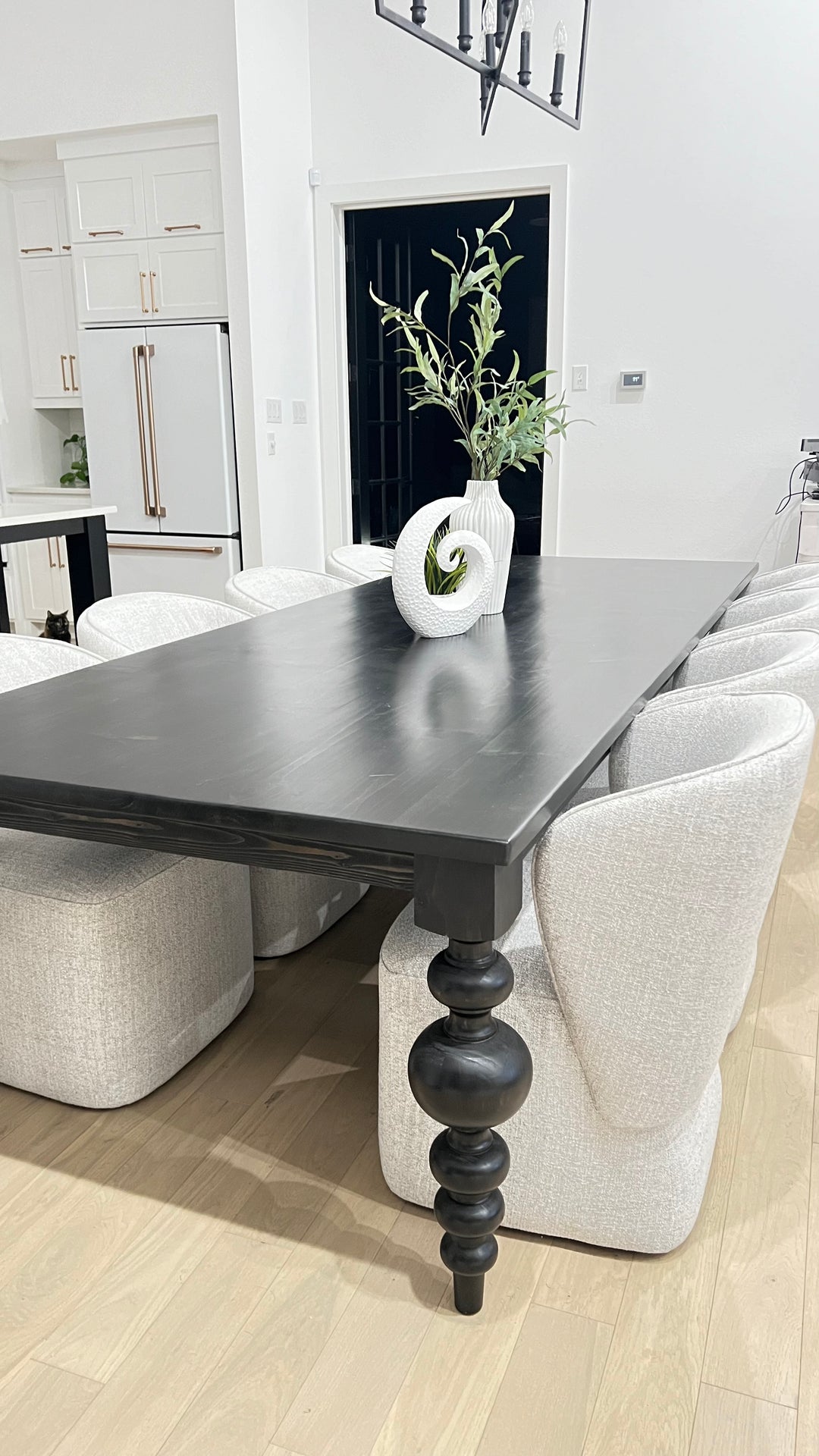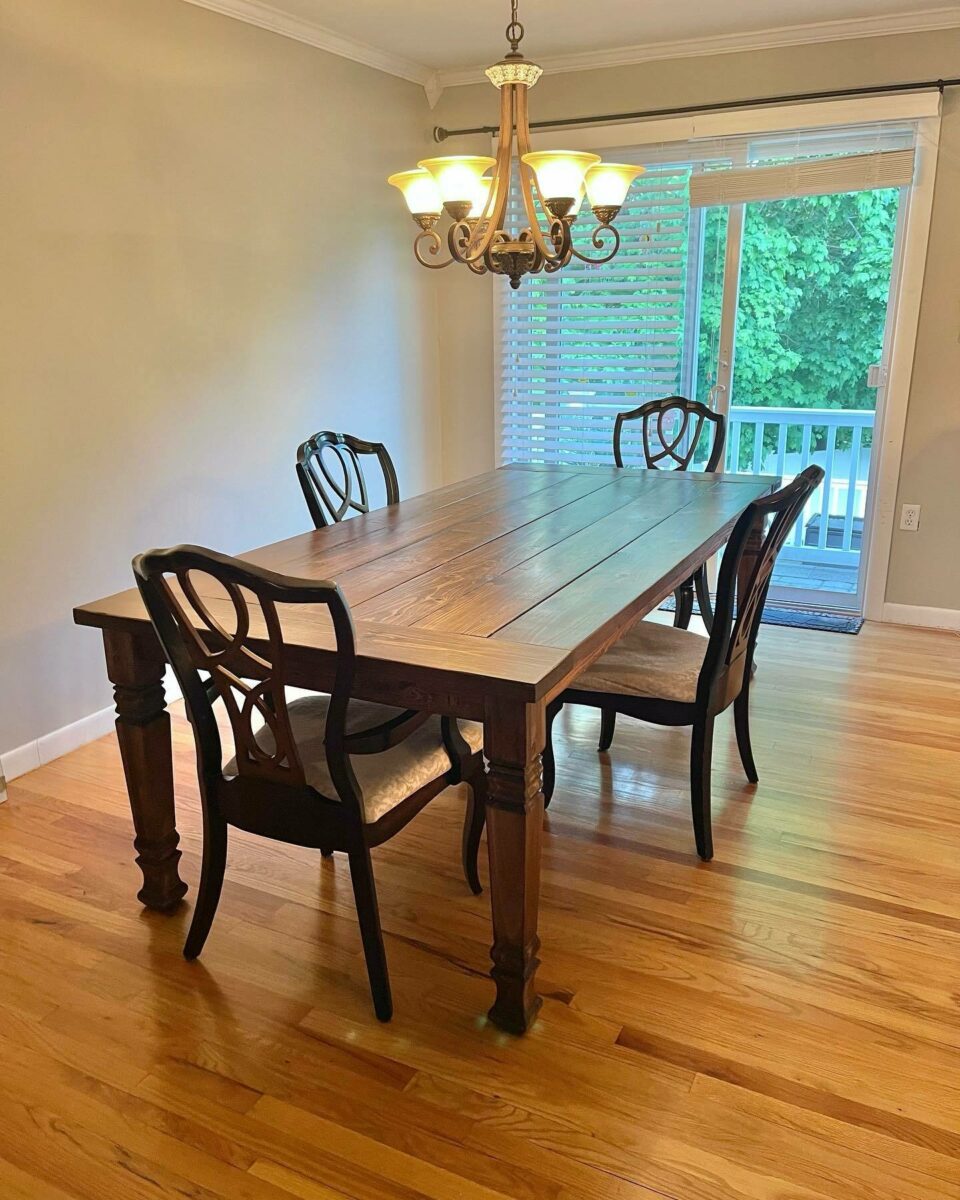From Conventional to Modern: Locate the Ideal Dining Space Table Legs for Your Style
The selection of eating area table legs plays an essential function in defining the overall character of your room, linking the void between traditional workmanship and modern aesthetic appeals. While traditional styles such as cabriole and transformed legs stimulate a feeling of timeless class, modern styles like hairpin and geometric choices present a chance for striking aesthetic rate of interest. Examining the right balance between these designs calls for a nuanced understanding of your existing design and personal taste. As you consider these aspects, the concern remains: how can you seamlessly incorporate these diverse leg styles to produce an unified eating experience?
Recognizing Table Leg Styles
The selection of dining-room table leg designs can substantially influence both the visual appeals and functionality of the room. Each leg style adds one-of-a-kind visual elements and sensible functions, dealing with diverse layout preferences and use demands. Understanding these styles is essential for picking the appropriate table that lines up with your overall interior decoration vision.
For instance, conical legs offer a tidy, traditional look that can improve a room's sophistication, while pedestal bases provide security and make best use of legroom, making them excellent for smaller rooms. Hairpin legs, a hallmark of mid-century modern-day design, present a commercial style, enabling an airy, open feeling. Trestle legs stimulate rustic charm, providing robust assistance and a feeling of timelessness.
Additionally, the option of materials plays a significant duty. Wooden legs can bring warmth and structure, whereas steel choices often communicate a sleek, contemporary ambiance. Inevitably, understanding table leg styles is vital for producing a cohesive eating location that shows individual style while guaranteeing practicality and convenience. By attentively taking into consideration these components, you can enhance both the visual and functional allure of your dining room.
Standard Table Leg Options
When selecting dining-room table legs, conventional choices typically symbolize ageless style and workmanship. These layouts show a rich heritage and a commitment to quality, making them perfect for those who appreciate classic looks.
Among one of the most legendary traditional leg designs is the cabriole leg, characterized by its stylish curved shape. This style typically features decorative makings and is most commonly found in Queen Anne and Chippendale furniture. Another preferred alternative is the transformed leg, which boasts a series of smooth, rounded shapes that provide a timeless look while keeping stability.
Additionally, the straight leg, while basic, supplies a unadorned and sturdy structure that can mix effortlessly with a selection of tabletop styles. For those attracted to ornate outlining, claw-and-ball feet legs evoke a sense of majesty and can work as a sensational prime focus in any type of eating space.
Lastly, pedestal bases, although not purely legs, offer an alternate typical alternative that enables ample legroom and can be beautifully carved. Each of these traditional leg designs adds to the general atmosphere of a dining space, weding function with aesthetic charm.

Modern Table Leg Designs
Modern table leg styles supply a varied variety of styles that highlight clean lines and cutting-edge products. These layouts frequently prioritize performance while offering as striking focal points within an eating area. Minimal looks are widespread, with legs crafted from products such as steel, glass, and engineered timber, which add to a modern and ventilated feel.
One prominent style is the barrette leg, visit this website defined by its slim, tapered structure that supplies stability without frustrating the table top (dining room table legs). This style is often located in mid-century contemporary furniture and can easily enhance different table forms. Another fad is using geometric shapes, where legs might handle unbalanced or angular forms, including visual rate of interest and a touch of virtuosity

Blending Designs for Special Areas
Commonly, house owners seek to develop one-of-a-kind eating spaces that reflect their individual design by mixing various layout aspects. This technique permits the unification of diverse visual appeals, leading to an unified yet unique environment. For instance, pairing a rustic wooden table with streamlined, modern-day metal legs can create an appealing comparison that raises the room's total allure.
Additionally, integrating vintage table legs with contemporary table tops can stimulate a sense of background while preserving a modern-day perceptiveness. Such mixes not just display specific preference but likewise urge creative thinking, allowing property owners to curate an area that feels both personal and welcoming.
Color plays an important duty in this blending process; selecting table legs that match or contrast with the existing color design can improve aesthetic interest. Whitewashed legs can soften the daring of a dark table surface area, get redirected here producing a well balanced visual.
Tips for Choosing the Right Legs
Selecting the right table legs is vital for accomplishing both performance and aesthetic appeal in your dining room. Begin by considering the total style of your space. Traditional settings profit from legs that include complex makings or transformed styles, while contemporary rooms might require sleek, minimal styles.
Next, examine the elevation and stability of the legs. dining room table legs. Conventional eating tables range in between 28 to 30 inches in elevation, so ensure the legs complement this measurement for convenience. In addition, robust materials, such as wood or steel, can boost stability and durability
Review the leg shape too-- choices consist of right, tapered, or stand layouts. Straight legs offer a timeless appearance, while tapered legs can add a touch of sophistication. Pedestal bases provide adequate legroom and are optimal for smaller sized areas.
Verdict
In summary, picking the perfect eating area table legs needs careful consideration of both modern and traditional styles. By balancing leg style, height, and product with the overall design, a cohesive and inviting ambience can be accomplished.
The variety of eating area table leg styles can substantially affect both the aesthetic appeals and functionality of the space. Inevitably, recognizing table leg styles is important for creating a cohesive eating area that shows personal design while guaranteeing usefulness and comfort.One of the most renowned standard leg designs is the cabriole leg, identified by its graceful bent form. Straight legs supply a classic appearance, while tapered legs can add a touch of style.In recap, selecting the excellent dining room table legs needs mindful consideration of both modern and typical styles.